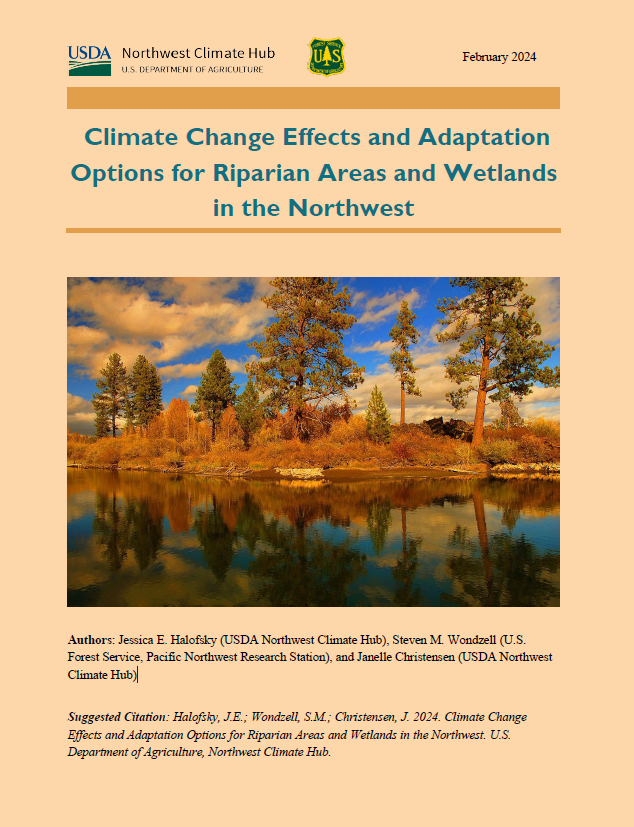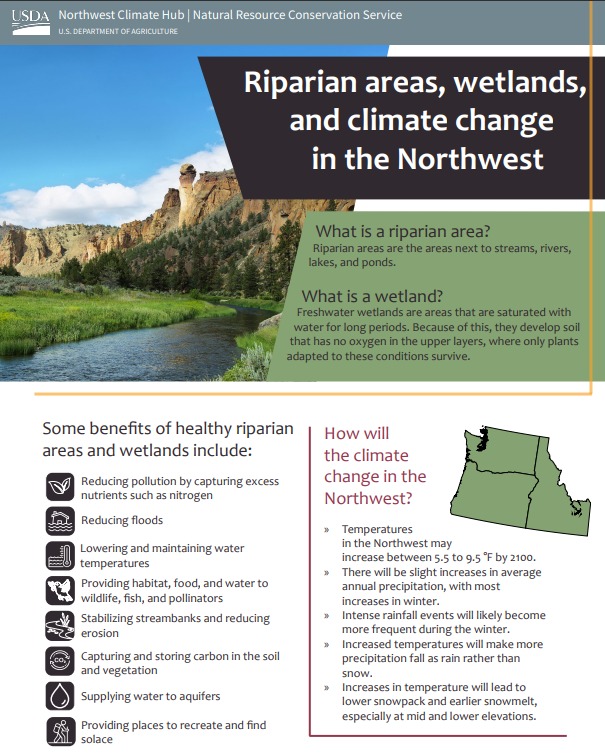Riparian areas, or riparian zones, are the areas adjacent to rivers, streams, lakes, and ponds. These areas lie at the intersection of terrestrial and aquatic ecosystems. Like riparian areas, freshwater wetlands are often connected to water bodies, but they have unique features that cause them to be treated and managed separately from riparian areas. Together, riparian areas and wetlands provide several benefits for humans and wildlife, including:
- improving water quality
- decreasing or maintaining cooler water temperatures
- providing habitat for wildlife
- increasing groundwater infiltration
- capturing and storing carbon in plants and soil
In Idaho, Oregon, and Washington, riparian areas and wetlands often exist on private land. When these places are on working lands such as farms, ranches, or forests, they can be invaluable to landowners. The services they provide can increase the value of their land, provide water for livestock, and increase water availability for farms, forests, and ranches.
The USDA Natural Resource Conservation Service (NRCS) works with landowners to maintain and improve the health of riparian areas and wetlands on private lands. Despite their crucial importance, historical and present-day land-use practices have diminished the ability of these areas to provide these essential services. In addition, the current health of riparian areas and wetlands determines if they can respond and adapt to climate-related stressors. To ensure these areas continue providing valued ecosystem services in a warming climate, riparian areas and wetlands can be restored. NRCS uses Conservation Practice Standards to help landowners implement practices that can help riparian areas and wetlands be more resilient to climate change.
To successfully employ Conservation Practice Standards that target regional challenges, NRCS staff need to know what threats exist and what changes are occurring. Unfortunately, summaries of regionally relevant information on climate change in riparian areas in the Northwest were not available. This meant NRCS staff did not have easily accessible information on what changes are happening or how to adapt.
In response, NRCS provided the Northwest Climate Hub funds to synthesize the current science on climate change in riparian areas and wetlands. We worked with the Pacific Northwest Research Station to develop “Climate Change Effects and Adaptation Options for Riparian Areas and Wetlands in the Northwest.” This technical guide summarizes the threats of climate change to riparian areas and wetlands. It then discusses adaptation options. Lastly, it associates these adaptation options with NRCS Conservation Practice Standards to encourage on-the-ground application of adaptation actions.
In addition to the technical guide, we created a factsheet that outlines changes and ways to respond to climate change in riparian areas and wetlands. These products will help NRCS staff understand how climate change affects these important places. As a result, it will help them discuss these changes with producers and implement Conservation Practice Standards that help riparian areas and wetlands be resilient in the future.
To see a detailed synthesis of this work on our website, visit our webpage on Northwest Riparian Areas and Wetlands in a Changing Climate.



